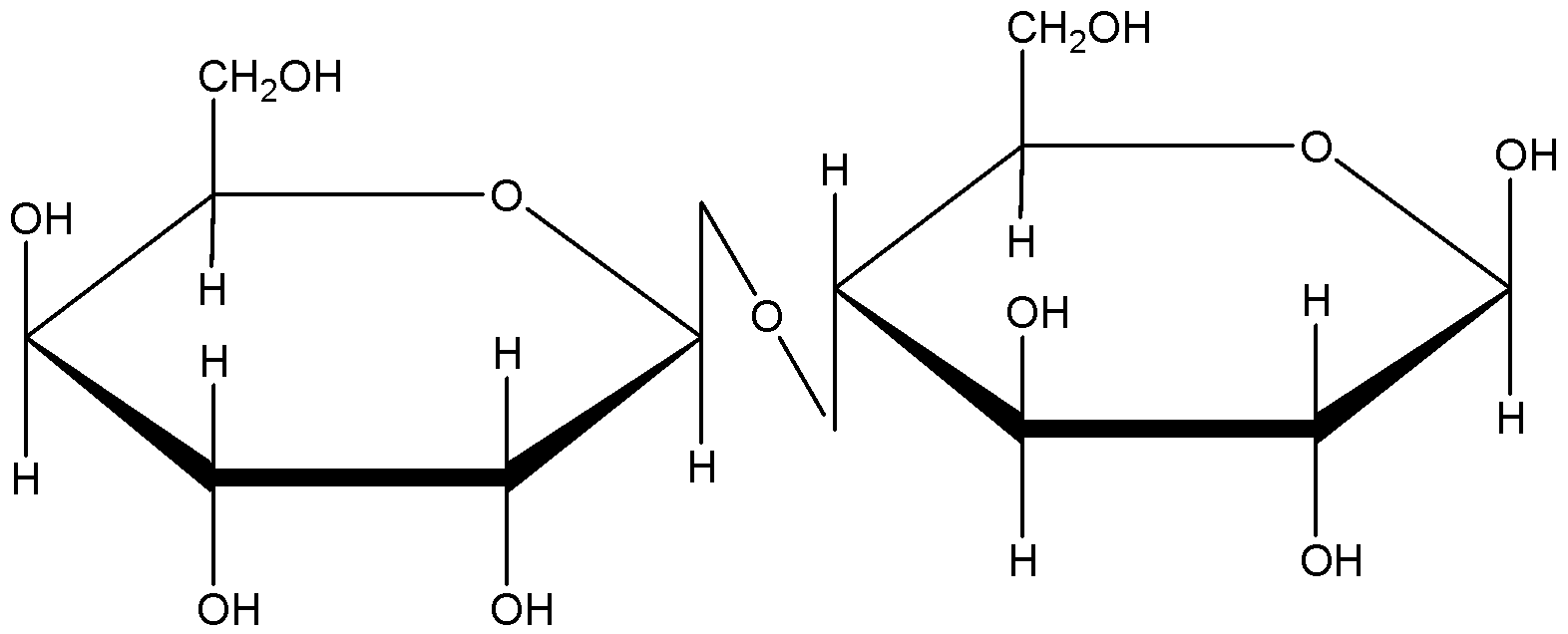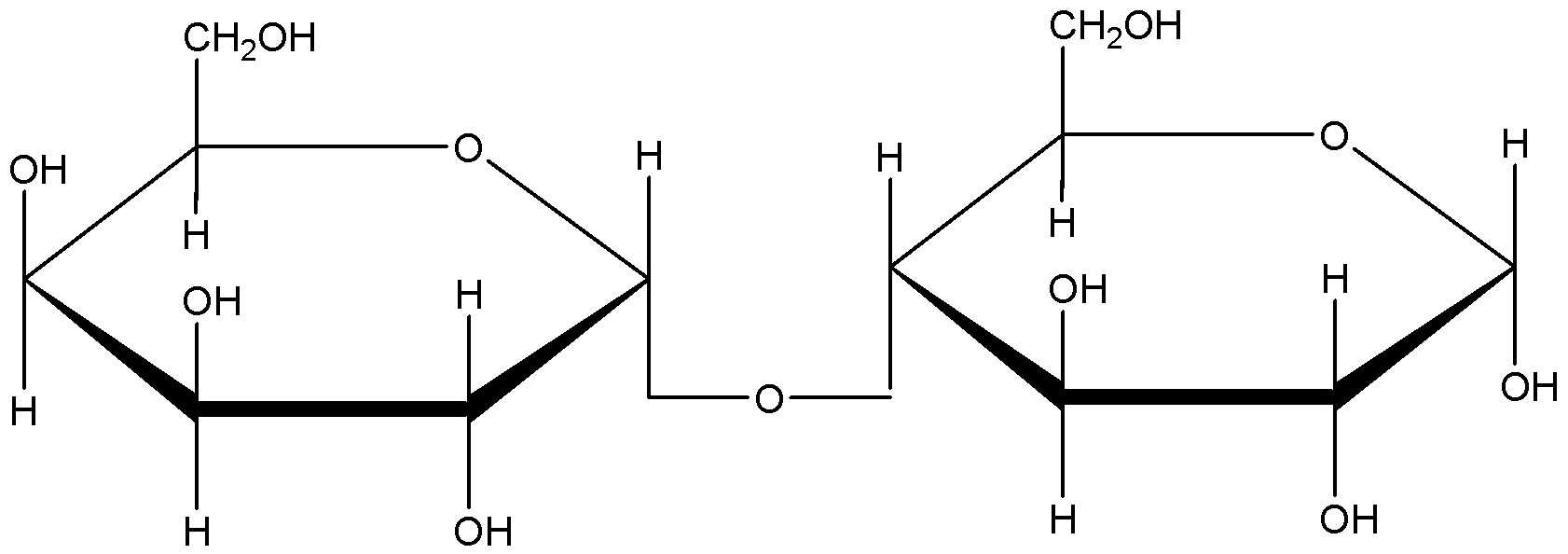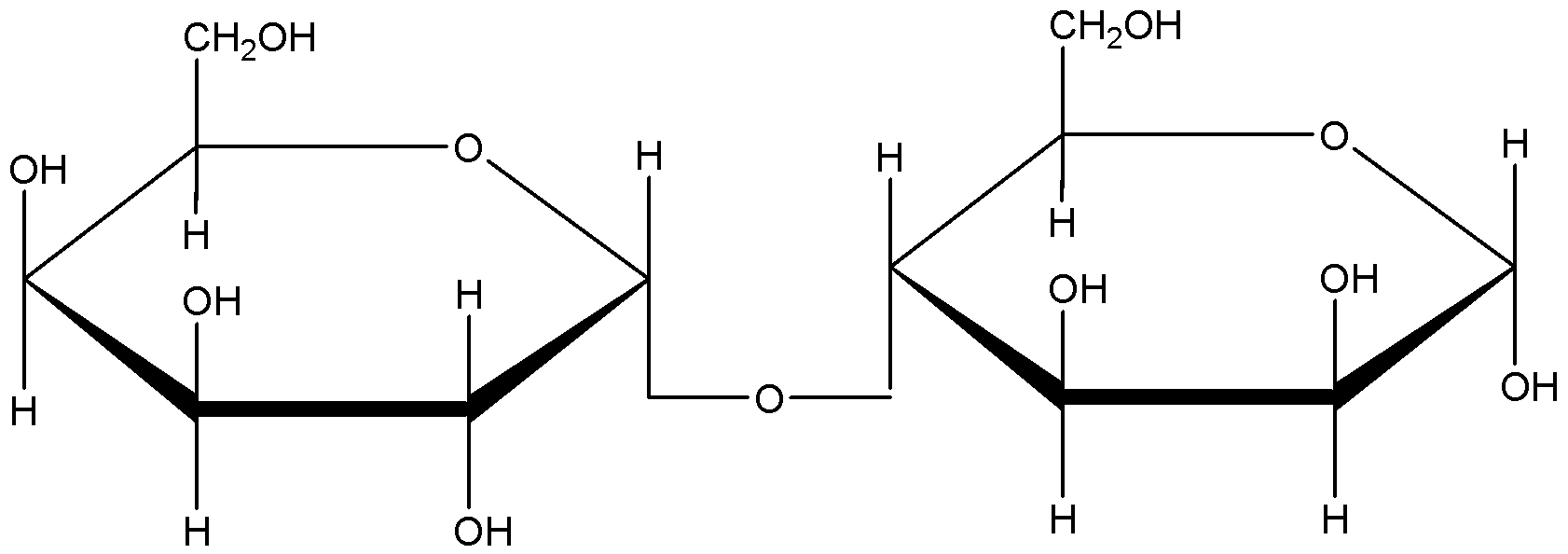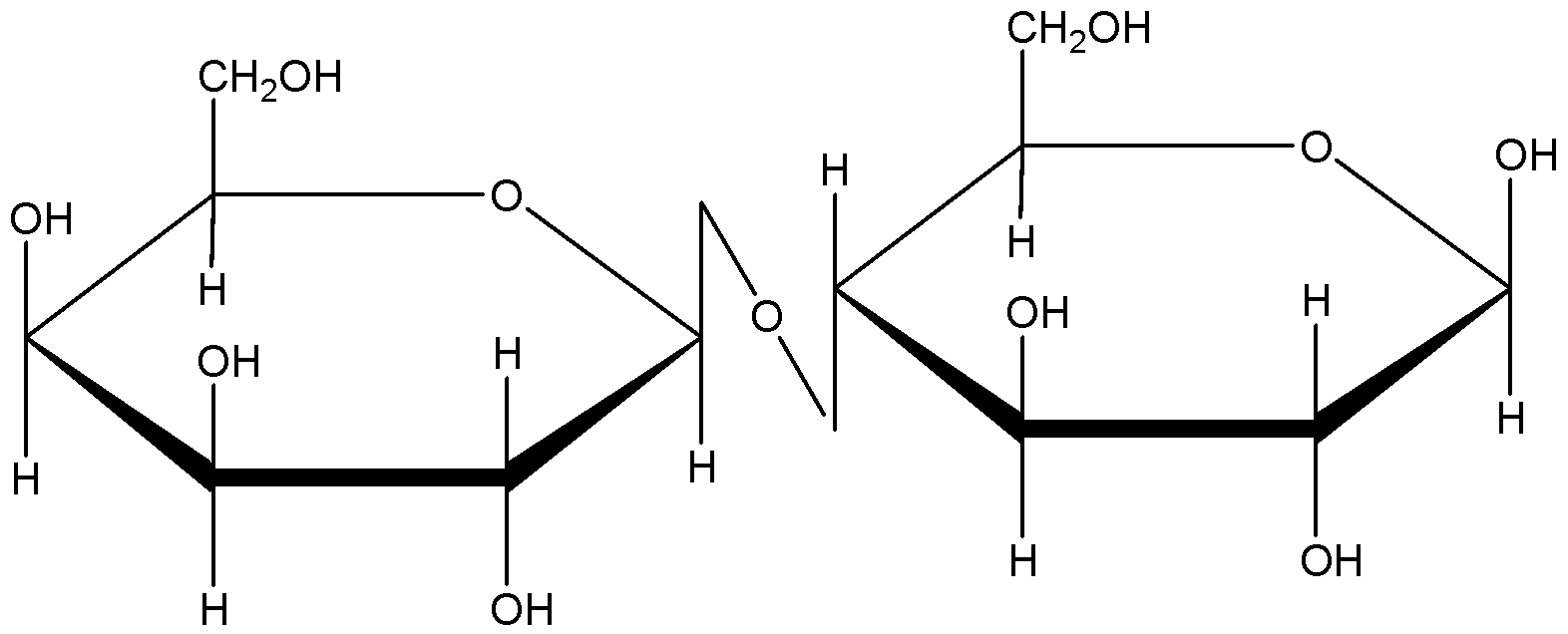
Which one of the following is the structure of lactose?
A.

B.

C.

D.





Answer
556.2k+ views
Hint: Lactose is a disaccharide made up of glucose and galactose, both of them are monosaccharides. Because of the anomeric carbon on the right side of the structure below, lactose can exist as two isomers, alpha or beta, in which the hydroxyl on the anomeric carbon would point up on the ring structure.
Complete answer:
Lactose is a disaccharide that occurs naturally in both human and cow's milk. It is widely used in baking and in commercial infant-milk formulas.
Lactose is a reducing sugar which is composed of composed of one molecule of D-galactose and one molecule of D-glucose joined by a \[\beta \] -1,4- linked glycosidic bond (the bond from the anomeric carbon of the first monosaccharide unit being directed upward). The two monosaccharides are obtained from lactose by acid hydrolysis or the catalytic action of the enzyme lactase.
Lactose contains two different monosaccharide units. If we look at the structure of lactose, we see that there is one significant difference between galactose and glucose. Galactose’s fourth carbon has a different orientation in galactose than in sucrose. If it was not so the resulting molecule would have just been sucrose (glucose + glucose) instead of lactose.

Also, from the structure, we can notice that lactose is a reacting sugar since it has one free hemiacetal hydroxide. So, when we react to Lactose with bromine water it will give monocarboxylic acid.
Therefore, the correct answer is option (C).
Note: One of its most important functions of lactose is its utilization as a fermentation substrate. From lactose, lactic acid bacteria produce lactic acid, which is the beginning of many fermented dairy products. Because of their ability to metabolize lactose, they have a competitive advantage over many pathogenic and spoilage organisms. Also, some people are lactose intolerant; as they lack the lactase enzyme, hence they cannot digest lactose, or dairy products containing lactose.
Complete answer:
Lactose is a disaccharide that occurs naturally in both human and cow's milk. It is widely used in baking and in commercial infant-milk formulas.
Lactose is a reducing sugar which is composed of composed of one molecule of D-galactose and one molecule of D-glucose joined by a \[\beta \] -1,4- linked glycosidic bond (the bond from the anomeric carbon of the first monosaccharide unit being directed upward). The two monosaccharides are obtained from lactose by acid hydrolysis or the catalytic action of the enzyme lactase.
Lactose contains two different monosaccharide units. If we look at the structure of lactose, we see that there is one significant difference between galactose and glucose. Galactose’s fourth carbon has a different orientation in galactose than in sucrose. If it was not so the resulting molecule would have just been sucrose (glucose + glucose) instead of lactose.

Also, from the structure, we can notice that lactose is a reacting sugar since it has one free hemiacetal hydroxide. So, when we react to Lactose with bromine water it will give monocarboxylic acid.
Therefore, the correct answer is option (C).
Note: One of its most important functions of lactose is its utilization as a fermentation substrate. From lactose, lactic acid bacteria produce lactic acid, which is the beginning of many fermented dairy products. Because of their ability to metabolize lactose, they have a competitive advantage over many pathogenic and spoilage organisms. Also, some people are lactose intolerant; as they lack the lactase enzyme, hence they cannot digest lactose, or dairy products containing lactose.
Recently Updated Pages
Master Class 12 Business Studies: Engaging Questions & Answers for Success

Master Class 12 Economics: Engaging Questions & Answers for Success

Master Class 12 English: Engaging Questions & Answers for Success

Master Class 12 Maths: Engaging Questions & Answers for Success

Master Class 12 Social Science: Engaging Questions & Answers for Success

Master Class 12 Chemistry: Engaging Questions & Answers for Success

Trending doubts
What are the major means of transport Explain each class 12 social science CBSE

Which are the Top 10 Largest Countries of the World?

Draw a labelled sketch of the human eye class 12 physics CBSE

Explain sex determination in humans with line diag class 12 biology CBSE

The pH of the pancreatic juice is A 64 B 86 C 120 D class 12 biology CBSE

Explain sex determination in humans with the help of class 12 biology CBSE




